This is a super simple but REALLY effective clay project that my students love. I teach this clay coil bowl project to my Year 8 students and their results are lovely – and can take their plates home with them when they’re finished. The project is inspired by the coiling techniques and shapes used in traditional pueblo pottery.
This clay coil bowl art project is great for the end of term as students can really get hands on, it’s fairly quick to get into and you can have them completely made after just two or three lessons. Plus students love taking their coil bowls home when they have been fired and painted!
The project is designed to introduce students to Pueblo pottery (ceramic objects made by the indigenous Pueblo people) and traditional techniques used for building pots such as coiling. Students learn about the tradition of coiling, pueblo pottery art and methods for painting clay that don’t involve glazes (too expensive for my department!). In researching for this project, I have had some fantastic help from Nancy at the Indian Arts Research Center and the Facebook group Art Teachers for Antiracist Curriculum.
If you would like a copy of the resources for this project, just leave a comment below and I will share it with your email address.
I don’t have loads of storage in my classroom and some of my classes are huge (35 students) so when I was planning to teach this clay project I needed to think about storage too… Boring! But necessary.
We decided to use paper bowls to have students build their coils onto (wanting to reduce our plastic use across the department) and they were cheap to buy, however, I wish we had used just plastic plates or bowls instead 🙈 The paper ones didn’t last long, they sunk under the weight of the clay and some got soggy when students used too much water. Anyway, lesson learnt! Next time, I would use plastic bowls and keep them to reuse each year.
To store, we stacked the bowls up in trays at the end of each lesson with wet paper towels between them, then wrapped the stacks in bags to keep them damp for the next lesson.
Which materials do you need for this clay coil bowl project?
As I’ve been teaching I have slowly learnt that spending a bit more on better quality materials means they last longer. The wall mounted clay extruder has been an absolute lifesaver – the ability to hand-pull coils means building with clay is so much simpler. The blue clay tools are absolutely fine to use but are so easily broken that I have started to use these metal tools, gradually buying a few more each year, and they last so much longer.
This clay project is inspired by the coiling techniques used by indigenous Pueblo peoples, where the bowls are built from the middle and coils are added to the edge to build the bowl outwards. I taught the students here to add the coils in geometric shapes such as triangles and squares. Where the Pueblo pottery is smoothed both inside and out, these bowls are only smoothed on the outside, allowing the design of the coils to show once the bowl is turned over.
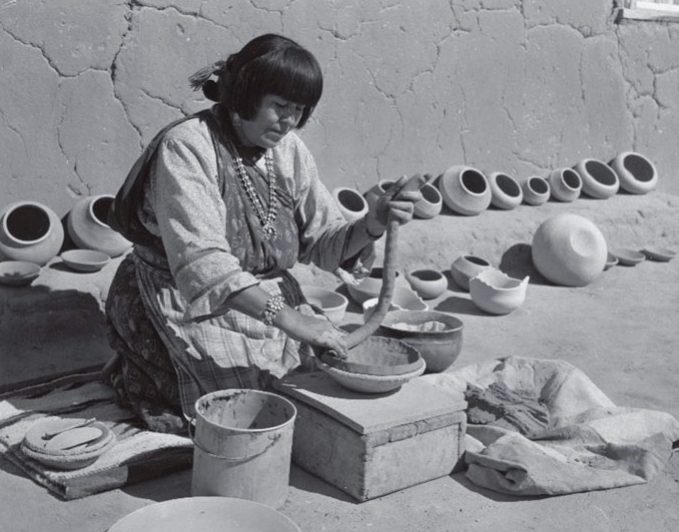

After an introduction to Pueblo pottery, students completed research pages about Pueblo Pottery in their sketchbooks. Since I didn’t have much time to deliver this project, I gave them one lesson and set a homework for them to finish their research.
They were asked to answer questions in their research and include designs based on what they had seen so far – I also gave them handouts to use, which are included in the slides of the presentation. These are the questions students need to answer on their research pages:
- What is the meaning of ‘pueblo’?
- How many separate pueblos are in New Mexico?
- Where were the first bits of pottery discovered?
- What was the pottery traditionally used for?
- How was the pottery made?
Next I introduced an overview of what students would be creating, they love the look of the coil bowls and the Indian inks with metallic dry brush really make their bowls vibrant – showing them this slide really motivated my students to take care with the clay and their designs.
There is a great video showing the coiling process that I show to students (added in the presentation), then I have taken stills and included those on the slides too. I will eventually make my own video but, well… time!
I have included slides with clean up roles (essential for clay lessons!) and starters / entry tasks throughout the project that get students to consider the shapes they are making, and reflect on the work they have done. There are also peer assessment tasks which can be done as a discussion rather than having students get their sketchbooks / glue etc. out – I think there’s enough going on with all of the clay equipment everywhere.
All of the lessons in this project include entry / starter tasks (bell ringers) and plenaries or reflections for the end of the lesson. Sometimes if it was a practical lesson I have included numbered instructions for students to ensure clearing away was done properly.
This is a really fun clay project because the structure of the bowls is already in place, and as long as students smooth the outside of their bowl, they can’t really go wrong! I only spend two or three lessons on the actual building, as the clay needs about a week to completely dry out before being fired in the kiln.
Once their clay bowls had been fully coiled, smoothed, dried and fired, I introduced colour. I love the effect that metallic acrylic has on Indian inks, so I used this idea – but obviously you can paint or decorate them however you wish. I just like how the Indian inks spread and soak into the clay, but also leave a slightly glossy finish.
After a spot of dry brushing with the metallic acrylic paints, the clay bowls were finished and ready to take home – students loved them! What do you think? If you’d like a copy of the resources just leave a comment below and I will share the presentation with your email address 🙂
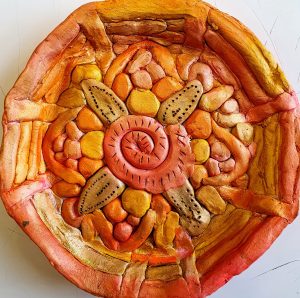








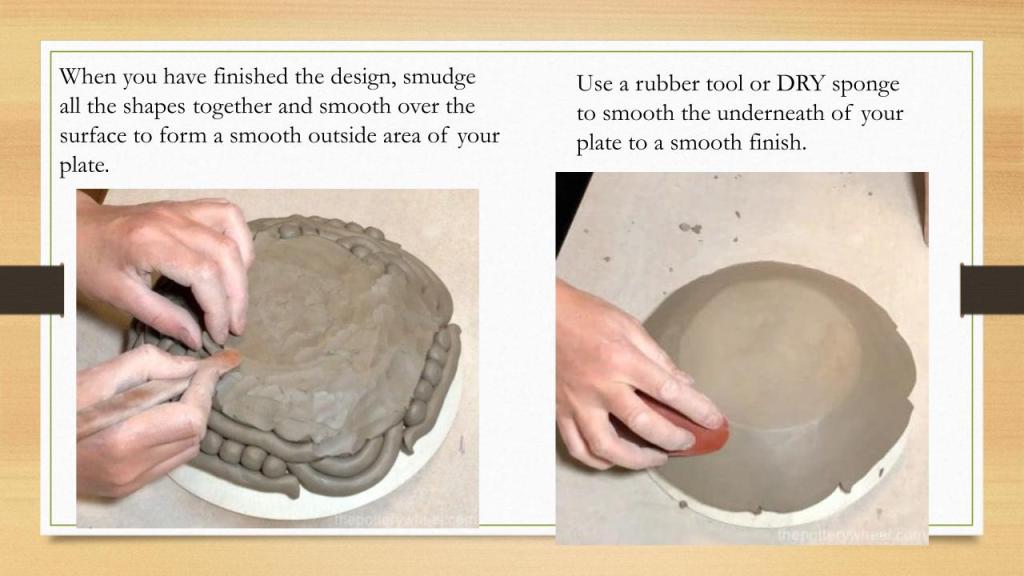
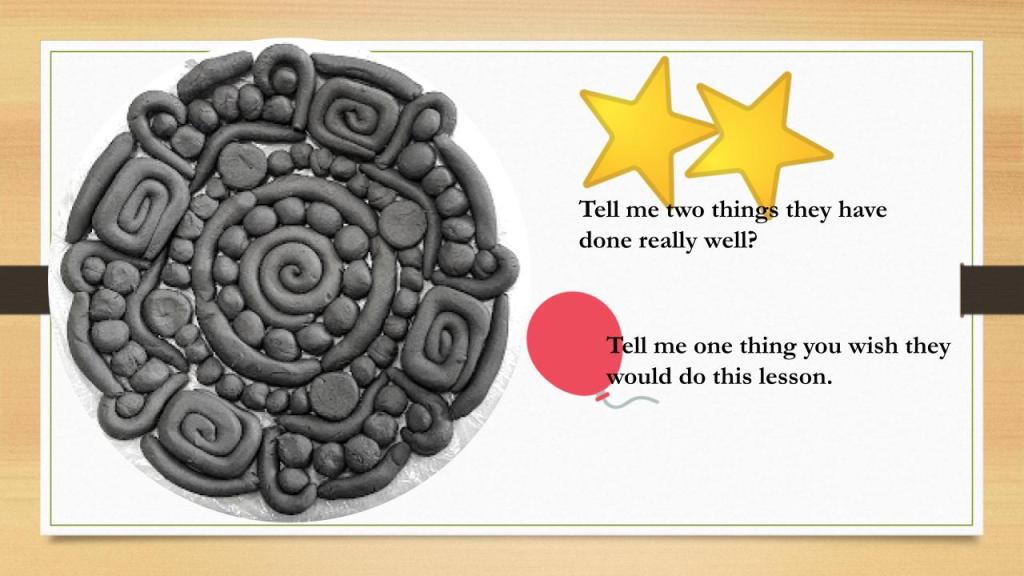








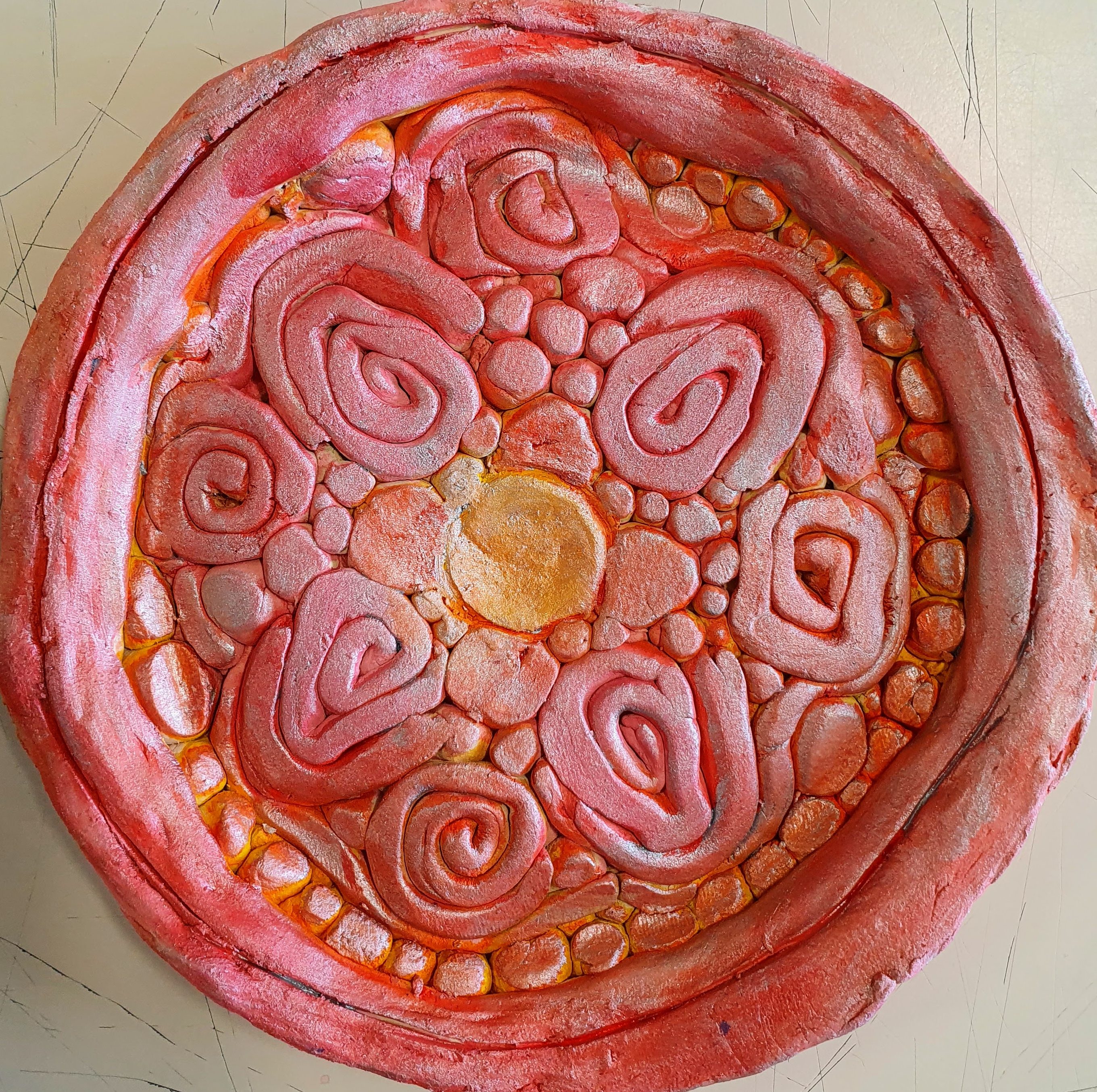

This looks wonderful. Could you please share the lesson plan. Thank You.
LikeLiked by 1 person
Glad you like the look of it! I just sent it over 🙂
LikeLike
Hi
The lesson looks great. Can I have the lesson plan.
LikeLike
Thanks! Yes, I have sent it over.
LikeLiked by 1 person
hi could i have a coopy of the resources for this lesson thank you
LikeLiked by 1 person
Hi, yes of course, I just shared them!
LikeLike
Hi, Please could I have a copy of the resources for this lesson. Thank you.
LikeLike
Yes of course, I just sent them 🙂
LikeLike
Hello. Please can you share the full power point and lesson plan? Thank you
LikeLike
Hi, yes of course, I just shared it.
LikeLike
Hi, could i have a list of the materials needed in this project
thank you 🙂
LikeLike
Hi, the materials needed are listed in the post above 🙂 I just sent you the presentation as well.
LikeLike
Could I get a copy of the presentation? This looks awesome for my students! Thank you so much in advance! 🙂
LikeLike
Hi, I have just shared it with you – apologies for the delay 🙂
LikeLike
Wow. this is such an amazing project. Please could you share with my email address?
LikeLike
Thanks! I just shared it 🙂
LikeLike
This is great. Please could I have a copy of the lesson plan for this? Many thanks!
LikeLiked by 1 person
Thanks! I have just shared the presentation – there isn’t a lesson plan but the slides are all in lesson order 🙂
LikeLike
Would love to have a copy of your lesson for inspo
LikeLiked by 1 person
I just shared it with you – enjoy!
LikeLike
Yes please to the link !
LikeLike
I have just emailed it 🙂
LikeLike
What a well prepared and exciting lesson! Could you please share the presentation with me? Thank you in advance! I am excited to try this coil project with my new ceramics students this semester.
Thank you very much,
R Stone
LikeLike
Thanks! Glad you like the look of it – I have just shared it. I would love to see how your students get on with it 🙂
LikeLike
Hi could I have the resources too? Thanks
LikeLike
Yes! I just shared them 🙂
LikeLike
Love this!! I would love to do this my students.
Can you send me the PowerPoint slides? Thanks!!
LikeLike
I have just shared it! I’d love to see how your students get on with it too 🙂
LikeLike
Awesome. Would you mind sharing?
LikeLike
Not at all, I just sent it 🙂
LikeLike
Hi this looks great! Could I have a copy of the resources please? thank you
LikeLike
Hi, yes I just shared the project 🙂
LikeLike
Hi,
I would love a copy of the lesson plan. This looks so cool! Thanks in advance.
LikeLiked by 1 person
Thanks – I just sent it over.
LikeLike
I would love a copy of the resources if you don’t mind! These look awesome.
LikeLike
Thanks! I just sent them over – enjoy.
LikeLike
This is great! Can you please send me the lesson plan?
Thanks!
LikeLike
Hi, yes, no problem! I just shared it 🙂
LikeLike